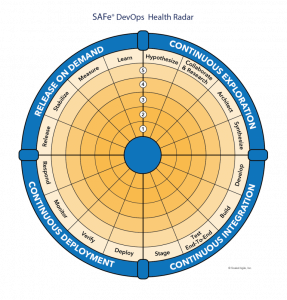
Published on May 16, 2022
While it is proven that product-based mindset and delivery model is not a choice to make but a key to success; the fact is that many organizations are struggling in captivating that shift. With my experience in managing multiple product delivery life cycles in variety of domains for big and mid-size enterprises; I’ve derived following elements that I think helps in climbing towards this shift.
These elements are synthesis of cultural, process-centric, and technology-centric segments.
Let’s have a look!
It starts from Leaders!
Shifting from project to product mindset is a big shift that follows top to bottom approach. The first mandatory step is that ‘C’ level leadership team owns this vision and mission. When the leadership is committed and persistent for this shift; the energy and efforts of entire organization brings the desired revolution!
Be a part of your client team!
Be your client’s partner; not external consultant! Research and collaborate, know client’s vision, and understand the problem that you are trying to solve for them.
Go Agile!
The first step to begin with is by adopting agile mindset and setting up key agile practices.
Endure change, be flexible, shorten release cycle time but increase number of releases, work jointly with testing team, seek frequent customer feedback and focus on value proposition.
Start by setting up core Agile practices and processes. Leverage power of tools like JIRA and Confluence for this. Enterprise programs preferably should adopt Safe Agile Framework (SAFe) for effectively managing larger scope, bigger program, and multiple teams.
Syntheses between Teams:
Business, Engineering, Operations
This is about leveraging the power of DevOps practices. Break down silos by all means! As very well explained in SAFe DevOps practices; your delivery cycle should be ‘continuous delivery’ lifecycle and it should further hold 4 different aspects (quadrants) with each aspect containing four activities as very briefly mentioned here:
Aspect 1: Continuous Exploration with activities: Hypothesize, Collaborate and Research, Architect, and Synthesize
Aspect 2: Continuous Integration with activities: Develop, Build, Test End to End, and Staging deployment
Aspect 3: Continuous Deployment with activities: Deploy, Verify, Monitor, and Respond
Aspect 4: Release on Demand with activities: Release, Stabilize, Measure, and Learn
Refer respective reference URL for complete details and implementation approach.

<SAFe Health Radar from Scaled Agile>
Shift to CDO
Move your focus from traditional data metrics to innovational product focused data on managing profit and instead of focusing only on data and analytics projects and program. Refer Gartner research on CDO 4.0 that clearly talks about data management focus to product based innovational accounting data management.
While the role is still new, it is extremely important to determine data-driven ambitions of enterprises and set the scope. You can read more on this in Gartner’s report on 10 ways CDOs can succeed in Forging a Data-Driven Organization.
As you can understand from above pointers, shifting towards a product-based delivery model is a shifting towards an elevated mind-set.
It’s not a switch. It’s a Process!
It’s not limited to one set of people, domain, or vertical. It’s global across the organization!
It’s not a choice. It’s essential!
(Image ref: Mike Kononov on Unsplash)









